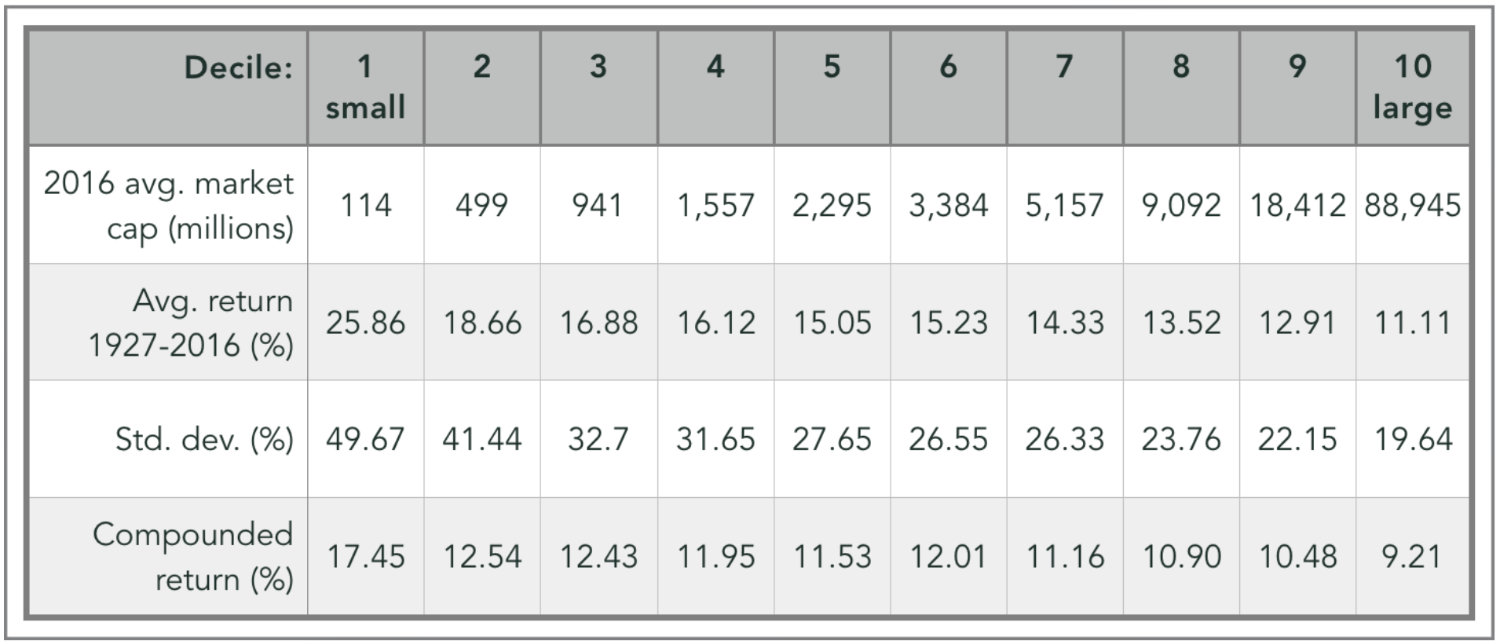All Great Companies
Started As Small Companies
We work with over 60 families to provide them with intelligent exposure to the smallest public companies in the world.
IFCM MicroCap Strategy
IFCM’s advantage is that we have substantial experience investing in small, illiquid microcaps. We have also gained considerable experience identifying intelligent fanatic attributes and leadership principles in microcap management teams. This combination provides us with a unique skillset in an area where we can exploit extreme inefficiency.
The IFCM MicroCap Strategy can be summed up in the following sentence:
Our goal is to own the smallest, most illiquid, least institutionally owned, misunderstood businesses we can find that are run by intelligent fanatics.
Why MicroCap?
A Microcap is a public company with a market capitalization less than $300 million. The microcap arena has historically been a breeding ground for undiscovered and misunderstood companies. Warren Buffett, Peter Lynch, and many other notable investors started their careers investing in microcap companies. Some of the best performing companies ever started as microcap companies, including: Wal-Mart, Netflix, Amgen, Celgene, and even Berkshire Hathaway. Furthermore, a majority of the public companies that have ascended 1,000%+ or more in recent years have originated out of the microcap ecosystem.
The IFCM MicroCap Strategy focuses predominately on the smaller half of the microcap ecosystem with market caps less than $150 million. There are more of these small microcap companies (8,000+) than the total amount of companies that trade on the New York Stock Exchange and NASDAQ combined (approximately 6,100).
Why own the Smallest MicroCaps?
From 1927 – 2016, the smallest decile of the public market (<$114 million market cap) has outperformed all other market cap classes. The table below shows the historic returns from the CRSP database for the ten deciles calculated with each decile members returns equally weighted (source).

Why own the most illiquid MicroCaps?
Roger Ibbotson is a Yale Finance professor and the Chairman and CIO of Zebra Capital. He has written several white papers, including “Liquidity as an Investment Style” where he argues that liquidity should be given equal standing to size, value, growth and momentum as an investment style. He examines stock-level liquidity in the top 3,500 market cap universe of U.S. equities from 1971–2017 and subjects it to the four style tests of Sharpe. One of his conclusions is that liquidity dominates size as a return predictor and provides evidence illustrated in the table below. Illiquid microcaps have produced 16.05% annual returns while liquid microcaps have produced 0.11% annual returns.

Why the least institutionally owned MicroCaps?
By default, the smallest and most illiquid microcap companies are not widely held by institutions. The illiquidity in these small public companies provides an embedded barrier of entry for larger pools of capital. This barrier creates an opportunity for skilled investors managing smaller sums to find, evaluate and deploy capital into undiscovered companies whereby larger pools of capital can only buy them when their equities are higher and more liquid. Additionally, when the market shifts from bull to bear, institutional investors look to reduce risk in their portfolios. They pull capital from investment vehicles such as microcap ETF’s and microcap-smallcap focused mutual funds and hedge funds. Microcap ETF’s and most microcap funds are invested predominantly in the larger microcap segment (>$150 million market cap). When institutions pull their capital, redemptions hit these investment vehicles causing constant selling pressure on the larger microcap segment. Institutional investors can’t sell what they don’t own. This is why the IFCM MicroCap Strategy focuses on the smaller half of the microcap ecosystem. We don’t want to invest where the institutions are, we want to invest where they are going to go.
Why misunderstood MicroCaps?
We strive to invest in undervalued companies that are misunderstood by the market place. It could be that the business, management, intellectual property, product, service, catalysts, and (or) potential is misunderstood. The only way to uncover misunderstood companies is to dig below the surface of the financials. Our goal is to invest in situations where full value will be realized in a reasonable time frame with attractive returns for our investors.
Why Intelligent Fanatics?
Who builds moats? Intelligent Fanatics do. Intelligent Fanatics are the world’s greatest business builders. Warren Buffett’s partner Charlie Munger first used the term “intelligent fanatic” to describe an exceptional business operator who has led a company from insignificance to domination of their niche, geography or industry.
IFCM founder Ian Cassel also co-founded IntelligentFanatics.com and co-authored two books that studied intelligent fanatics and their ability to create dominant organizations. IntelligentFanatics.com has studied over 100 known and unknown intelligent fanatics. There is a common blueprint amongst these leaders. The smaller the company, the more you are betting on the founder, CEO and management team’s ability to execute their vision. If we want to find great businesses early, we must identify great leaders early. The only way to spot the intelligent fanatics principles is to do the work and spend time with management, customers and employees. This is core to our investment process and strategy.
How do we find MicroCap opportunities?
We find opportunities utilizing a variety of sources. IFCM founder, Ian Cassel, founded MicroCapClub.com in 2011 to be a resource for microcap investors to find potential microcap opportunities and collaborate on due diligence with other experienced microcap investors. Since 2011, members have profiled over 600 microcap companies and MicroCapClub is now known as a premier investment forum dedicated to microcap investing. MicroCapClub is not only a great source for microcap opportunities, but a great group of microcap investor talent. In addition to MicroCapClub.com, we source microcap ideas from a variety of areas including but not limited to press releases, filings, websites, and by networking with investors.
IFCM MicroCap Fund
Our fund is now open to new investors/partners for a limited time. [Contact Us]
IFCM MicroCap Fund LP (OPEN)
- Capacity: $20 million
- Amount Available: $2 million
- Minimum Investment: $250,000 USD
Ground Rules
We are seeking to form an antifragile organization – A group of investors that become stronger under stress and volatility. To achieve this, we will go to great lengths to scare away the wrong type of investor.
The IFCM Microcap Strategy is a niche strategy. It isn’t meant for everyone. We offer this strategy to accredited investors seeking intelligent exposure to the smallest half of the microcap ecosystem.
The IFCM Microcap Strategy is for long-term investors. Do not invest if you have less than a 5-year time horizon. Our time horizon is one of our greatest advantages in the microcap ecosystem.
The IFCM Microcap Strategy is volatile. Do not invest if you cannot stomach volatility. We are investing in the smallest decile of the public markets. These businesses are small. Their equities are illiquid, and their stocks are volatile. Volatility creates opportunity.
The IFCM Microcap Strategy will have periods of underperformance. To be right in the long-term, we must be willing to look wrong in the short-term. Periods of underperformance should be expected and viewed opportunistically.
The IFCM Microcap Strategy is proprietary. We believe in full transparency with our investors. Do not invest if you are going to share our positions or try to mirror our strategy with outside accounts.
Our Team

